I have begun to make some progress with designing my 'new' wargames rules. The working title that I am using for all the related documents and folders is MEMOIR OF BATTLE 2 (MOB2) ... but whether I will want to keep that title in the long rule is something that I will leave until later.
So far I have sketched out a combat mechanism for both Artillery and non-Artillery Combat, with the latter doubling up for Close Combat (i.e. fighting between Units in adjacent abutting grid areas). In the case of Artillery Combat, this will be taken 'as is' from my MEMOIR OF BATTLE (MOB) rules, although I do intend to include a rule that allows an Artillery Unit to 'hold fire' so that it can fire later in the turn sequence in support of another Unit.
Non-Artillery Combat will still use the special D6 dice with symbols rather than numbers on the faces, but the number of dice thrown by each type of Unit will be determined by its strength and possibly its tactical formation, and not the range. This is a significant change to the existing mechanism that I used in my MEMOIR OF BATTLE (MOB) rules, but it makes it easier to accommodate differences in Unit quality and to reflect a Unit's reduced fighting ability as it begins to suffer casualties. I am also including a proviso that non-Artillery Units that move and fire in the same turn will fire with less effect.
I have also decided to keep the existing move distances from my original MEMOIR OF BATTLE (MOB) rules, but I will remove the difference between Native and non-Native troops. This was only really applicable to a few colonial Native armies and could easily be included in an appendix of optional extra rules.
My current design 'block' concerns the activation of Units during the turn sequence. In my MEMOIR OF BATTLE (MOB) rules I used an IGOUGO mechanism, but this does not provide sufficient uncertainty in both solo and face-to-face wargames. In the end my choice has come down to two alternatives:
I am making progress ... but the progress is still very much rushing slowly!
So far I have sketched out a combat mechanism for both Artillery and non-Artillery Combat, with the latter doubling up for Close Combat (i.e. fighting between Units in adjacent abutting grid areas). In the case of Artillery Combat, this will be taken 'as is' from my MEMOIR OF BATTLE (MOB) rules, although I do intend to include a rule that allows an Artillery Unit to 'hold fire' so that it can fire later in the turn sequence in support of another Unit.
Non-Artillery Combat will still use the special D6 dice with symbols rather than numbers on the faces, but the number of dice thrown by each type of Unit will be determined by its strength and possibly its tactical formation, and not the range. This is a significant change to the existing mechanism that I used in my MEMOIR OF BATTLE (MOB) rules, but it makes it easier to accommodate differences in Unit quality and to reflect a Unit's reduced fighting ability as it begins to suffer casualties. I am also including a proviso that non-Artillery Units that move and fire in the same turn will fire with less effect.
I have also decided to keep the existing move distances from my original MEMOIR OF BATTLE (MOB) rules, but I will remove the difference between Native and non-Native troops. This was only really applicable to a few colonial Native armies and could easily be included in an appendix of optional extra rules.
My current design 'block' concerns the activation of Units during the turn sequence. In my MEMOIR OF BATTLE (MOB) rules I used an IGOUGO mechanism, but this does not provide sufficient uncertainty in both solo and face-to-face wargames. In the end my choice has come down to two alternatives:
- A card-based system (possibly similar to that used in the RED HEX wargames rules); or
- A D6 initiative dice system of the type suggested by Kaptain Kobold.
I am making progress ... but the progress is still very much rushing slowly!
























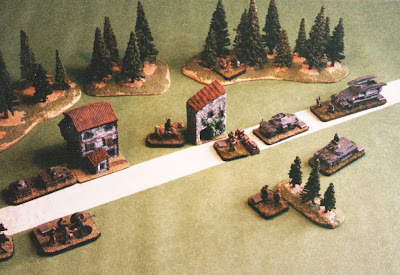












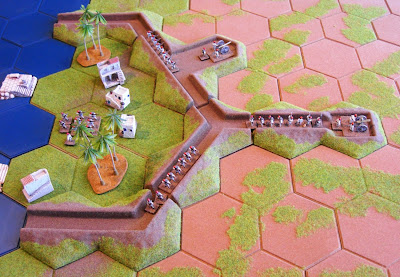









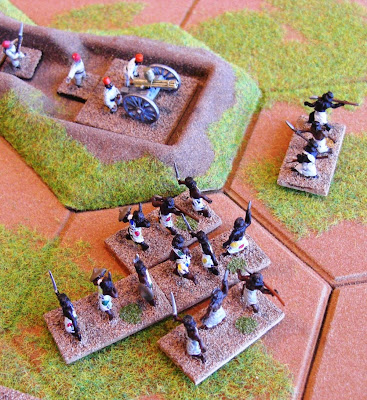


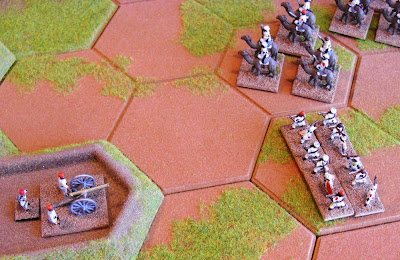


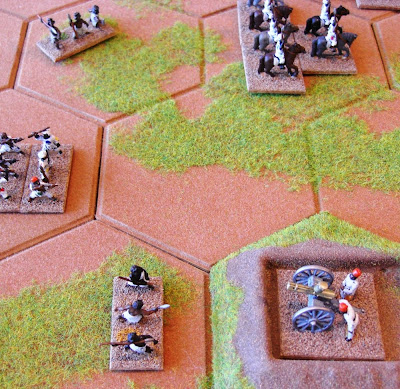






































.jpeg)











